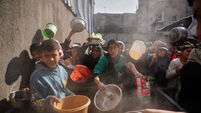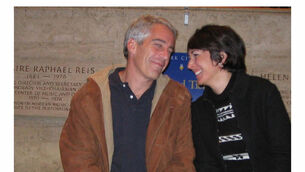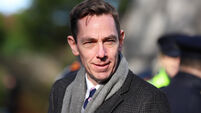Now it's up to the voters, says Bush
The first presidential election since the United States plunged into its war on terrorism was finally handed over to voters today.
President George Bush declared the “safety and prosperity of America” at stake and Democratic challenger Senator John Kerry said: ”The hopes of our country are on the line.”
A dizzying final dash across the country capped a campaign that found the contenders deadlocked at every vital turn and stirred expectations that Americans, for once, were highly motivated to vote.
“This election is in the hands of the people, and I feel very comfortable about that,” Bush said after he and first lady Laura Bush and twin daughters Barbara and Jenna cast ballots in Crawford, Texas.
“Now’s the time for the people to express their will.”
“Today is decision day,” Kerry told cheering supporters at an airport hangar in Toledo, Ohio. “You have an opportunity now, this day, to make fundamental change in America, and the hopes of our country are on the line.”
Overnight, the Bush campaign sent an e-mail from the president exhorting people to vote – “It comes down to today” – and asking that the recipient forward the e-mail to five more people.
Kerry e-mailed a similar call to arms: “When you go to the polls bring your friends, your family, your neighbours. No one can afford to stand on the sidelines or sit this one out.”
Long lines were reported at precincts from Florida and North Carolina to West Virginia and Michigan. “We even had people waiting in line before we opened at 6.30am,” said County Clerk Robert Pasley in Wayne, West Virginia. “In some places, there was more than a dozen people waiting, and that’s heavy.”
Rain was falling in parts of the Midwest as voters lined up. Brain Fravel, a 43-year-old welder who lives in Columbus, Ohio, said he had never before had to wait to vote. When he arrived at the Northland Church of Christ at 7.30am, he found a long line of people and waited 45 minutes to cast a ballot. “I thought I was early enough to beat it,” Fravel said.
The final pre-election polls turned up tied – 49% to 49% in one CNN-USA Today-Gallup survey, with independent candidate Ralph Nader at 1%. Tight surveys in Florida and a variety of Midwestern states including Ohio deepened the mystery over who would collect the necessary 270 electoral votes.
“In all honesty, I don’t think it’s possible to predict what’s going to happen,” Democratic vice presidential candidate John Edwards said. “I think we’re going to see unprecedented turnout. I think we’re going to see huge voter participation. And when that happens, democracy works. So we feel very confident, very optimistic.”
The United States’ first votes cast and counted on Election Day, in the mountain hamlet of Hart’s Location, New Hampshire, reflected in miniature what seemed likely to happen across the country: a close race.
Following a quirky tradition of post-midnight voting in New Hampshire’s North Country, 16 people voted for Bush, 14 for Kerry and one for Ralph Nader. Bush beat Democrat Al Gore 17-13 in the hamlet in 2000.
The prospect of unprecedented legal challenges hung over Election Day, each side sending thousands of lawyers into motion to monitor the flood of newly registered voters and mount hair-trigger challenges against any sign of irregularity.
In an 11th-hour blow for Democrats in key state Ohio, an appeals court in Cincinnati stayed lower court decisions and cleared the way for vote challengers to be present at polling places in the state today. Democrats had claimed Republicans were seeking to discourage minority voters by keeping party representatives out of polling stations.
The decisions were quickly appealed to the US Supreme Court, where Justice John Paul Stevens declined to overturn the appeals court action in an order issued little more than hour before the polls there opened.














